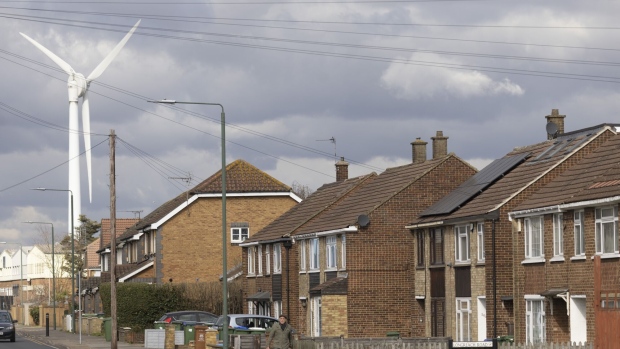Jun 6, 2023
England Set to Take 4,700 Years to Reach Wind Power Target, Study Says
, Bloomberg News

(Bloomberg) -- The year is 6723, and there are finally enough onshore wind farms in England to support the UK’s 2050 net-zero target.
At least that’s how long it would take at the current pace of construction, according to a report from the Institute for Public Policy Research, a London-based think tank. It’s an extreme example of how planning rules can slow renewable power development to an extent that could make climate targets impossible to reach.
“The current planning system in England is not remotely fit for purpose to build a net-zero world,” said Luke Murphy, IPPR associate director for energy, climate, housing, and infrastructure. “At current build rates, we’re as far from delivering the onshore wind we need for energy security as we are from the start of construction of Stonehenge in 2,500 BC.”
READ MORE: Record Wind Power Spares UK Even Worse Energy Crisis
Like many other countries across the region, the UK is seeking to be carbon-neutral by mid-century as it shifts away from fossil fuels and toward renewable energy sources. Many households across the country are currently facing a cost-of-living crisis, in large part due to soaring energy costs.
De Facto Ban
The multiple-millennia timeline is a result of policy under Britain’s ruling Conservative Party that effectively bans new onshore wind farms by making it extremely difficult to get new projects approved, according to the researcher.
Before a rule change in 2015, England was building about 180 megawatts of new onshore wind capacity every year, IPPR said in its report. After the amendment, that dropped to about 1 megawatt per year and only 17 small wind farms getting planning permission since then — about 0.02% of National Grid’s target for onshore wind by 2030.
“At this pace, it will take England 4,700 years to reach its share of this target,” it said.
Prime Minister Rishi Sunak agreed last year to a consultation that would end the ban by giving communities more latitude to approve projects. But industry group RenewableUK has said proposed changes won’t do much to boost onshore wind in England.
“We are scaling up renewable energy sources around the UK and since 2010 we’ve increased the amount of renewable energy connected to the grid by 500% – the second-highest in Europe,” a government spokesperson said. “Decisions about onshore wind are best made by local leaders who know their area best.”
©2023 Bloomberg L.P.


